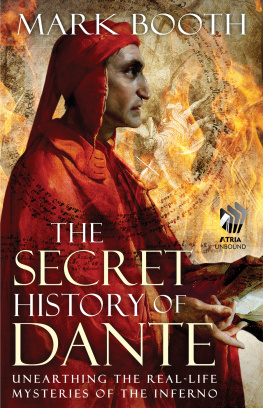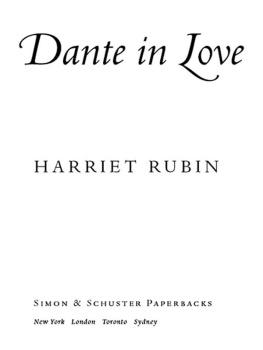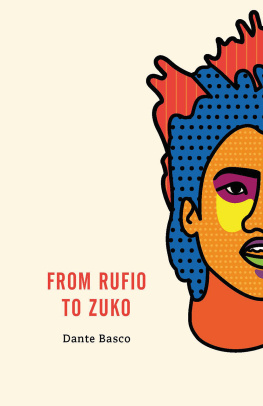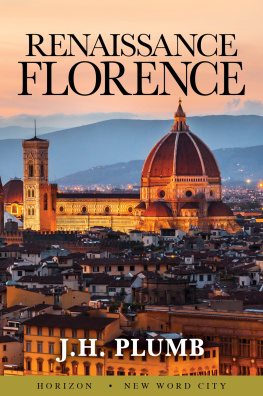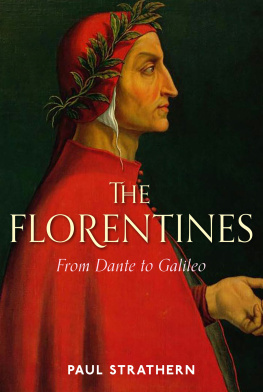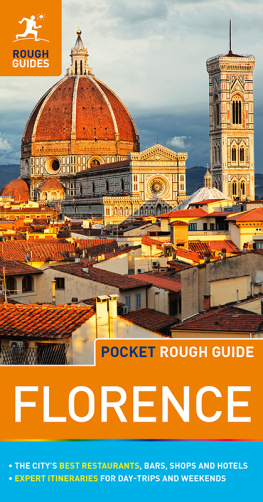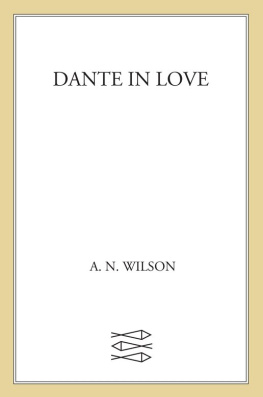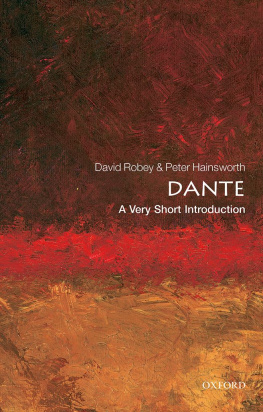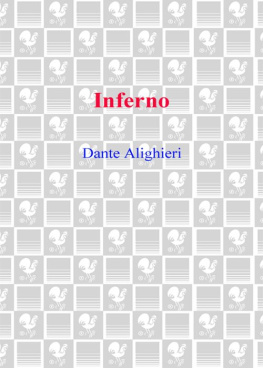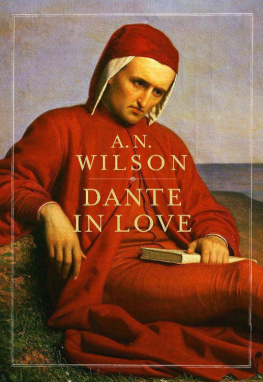Dameron - Florence and Its Church in the Age of Dante
Here you can read online Dameron - Florence and Its Church in the Age of Dante full text of the book (entire story) in english for free. Download pdf and epub, get meaning, cover and reviews about this ebook. year: 2004, publisher: University of Pennsylvania Press, genre: Religion. Description of the work, (preface) as well as reviews are available. Best literature library LitArk.com created for fans of good reading and offers a wide selection of genres:
Romance novel
Science fiction
Adventure
Detective
Science
History
Home and family
Prose
Art
Politics
Computer
Non-fiction
Religion
Business
Children
Humor
Choose a favorite category and find really read worthwhile books. Enjoy immersion in the world of imagination, feel the emotions of the characters or learn something new for yourself, make an fascinating discovery.

Florence and Its Church in the Age of Dante: summary, description and annotation
We offer to read an annotation, description, summary or preface (depends on what the author of the book "Florence and Its Church in the Age of Dante" wrote himself). If you haven't found the necessary information about the book — write in the comments, we will try to find it.
Dameron: author's other books
Who wrote Florence and Its Church in the Age of Dante? Find out the surname, the name of the author of the book and a list of all author's works by series.
Florence and Its Church in the Age of Dante — read online for free the complete book (whole text) full work
Below is the text of the book, divided by pages. System saving the place of the last page read, allows you to conveniently read the book "Florence and Its Church in the Age of Dante" online for free, without having to search again every time where you left off. Put a bookmark, and you can go to the page where you finished reading at any time.
Font size:
Interval:
Bookmark:

Florence and Its Church in the Age of Dante
THE MIDDLE AGES SERIES
Ruth Mazo Karras, Series Editor
Edward Peters, Founding Editor
A complete list of books in the series is available from the publisher.
George W. Dameron

Copyright 2005 University of Pennsylvania Press
All rights reserved
Printed in the United States of America on acid-free paper
10 9 8 7 6 5 4 3 2 1
Published by
University of Pennsylvania Press
Philadelphia, Pennsylvania 191044011
Library of Congress Cataloging-in-Publication Data
Dameron, George W. (George Williamson)
Florence and its church in the age of Dante / George W. Dameron.
p. cm. (The Middle Ages series)
Includes bibliographical references and index.
ISBN 0-8122-3823-0 (cloth : alk. paper)
1. Florence (Italy)Church history. 2. ItalyChurch history476-1400. I. Title. II. Series.
BX1548.F55D334 2004
274.55105dc22
2004049601
To my parents, Elizabeth Eaddy Dameron and John Lasley Dameron

Map 1. The dioceses of Florence and Fiesole, circa 1300. Map by Robert Gagliuso, Northern Cartographic, South Burlington, Vermont.

Map 2. The city of Florence, circa 1300. Map by Robert Gagliuso, Northern Cartographic, South Burlington, Vermont.
On July 3, 1292, in the open-air loggia of Orsanmichele in central Florence, where grain merchants sold their grain to feed a growing population, a series of curative miracles occurred that contemporaries believed were associated with an image of the Virgin Mary. According to the fourteenth-century chronicler Giovanni Villani (12801348), the local population had for a while been gathering there every evening to chant lauds before the image of the Blessed Virgin, painted on a column inside the structure. As the fame of these miracles spread throughout the region, pilgrims streamed in from all over Tuscany to pray to her to heal themselves or their loved ones. According to Villani, writing a generation later, those who believed the Virgin answered their prayers soon filled the wooden loggia to capacity with wax votive images. Each object was the acknowledgment of a miracle. After entering the grain market, a growing number of pilgrims began to leave large amounts of money available for distribution to the poor.
Included at the end of a section of his chronicle devoted primarily to political and military matters, this brief story captures some essential truths about the nature of Florentine society during the lifetime of Dante. The chronicler speaks here of a spontaneous and vibrant eruption of popular piety, a special devotion to sacred places, the constant movement of people into and out of the center of the city, and the troubling presence of the poor in the midst of prosperity. There is also evident here a connection between the marvelous and the mundane, between the material process of food distribution and a fervent reverence for the miraculous power of the painted image. Above all, this episode encapsulates an important truth: the Florentine church and the growing prosperity and power of the commune were inextricably linked.image of the Virgin, housed in a tabernacle attached to one of the pilasters of the loggia. The location remained linked to the sacred, paradoxically binding the material with the spiritual.
For observers like our chronicler, Giovanni Villani, in the space of two short generations, Florence had rapidly become one of the foremost cities of Europe. Much like New York in the generation after the American Civil War, Florence after the mid-thirteenth century was a former second-tier city rapidly on the rise, bustling with a large immigrant population, new money, and extensive new construction. With its growing wealth, new citizens, expanding suburbs, and extensive new building programs, Florence was indeed a city that was surpassing its rivalsPisa, Arezzo, Siena, and Luccato assume a position of economic and political prominence. By 1300 the city had 100,000 inhabitants, double the populations of Siena and Pisa, and three times the population of Lucca. Only Paris was more populated.
All of this changed rapidly after the middle of the thirteenth century. In the space of fifty yearsfrom 1250 to 1300its banking companies surpassed in importance those of Siena (the previous banking center), and its elite commenced construction on the secular and religious buildings that still dominate the city skyline.
For many in Florence at the time, however, the cost to society of this rise to supremacy was too great. As the city swelled with newcomers from the countryside who were seeking work in the large industrial enterprises, the streets seemed to teem with the poor, the homeless, and the seasonally employed. Perhaps 10 percent of the population was destitute in the midst of this growing prosperity. One man alone, according to Villani, gave alms to 17,000 poor, 17 percent of the urban population. Dante Alighieri himself wrote in the Inferno about the toll that immigration and profit-taking had taken on his native city:
Newcomers to you,
O Florence, and sudden profits, have led to pride
And excess that you already mourn!
In this quote Dante captures one of the central paradoxes of Florentine culturea paradox embedded in the religious environment of the city: there was pride in a prosperous Florence as a chosen city of God, but disdain for the vices of greed and arrogance that had helped transform it so rapidly into a city divided increasingly between rich and poor, insiders and outsiders.
How had this citywhich in 1250 had scarcely expanded beyond the limits of the Roman wallsrapidly become by 1330 one of the most affluent, culturally dynamic, and politically powerful cities on the continent, not to mention in Tuscany? Why not Pisa, Lucca, or Siena? There is no one answer to these questions. As Philip Jones has recently summarized, its competitive superiority, its ability to dominate lesser cities militarily, its success at compelling Pisa to grant freedom of commerce into and out of its port (after 1254), and its close connections to the Roman papacy were all important factors. Also significant were its successful pursuit of a policy of urban colonialism and its control of credit and capital flows that forced other communes (such as Arezzo, Volterra, and San Gimignano) into economic dependence. Perhaps the most important explanation, as Paolo Malanima has argued, is that two processes developed simultaneously in Florence and nowhere else in Tuscany: an advanced export-oriented textile industry and a highly productive and efficient agricultural sector. Each interacted with the other synergistically to create an accelerated rate of economic growth. Domestic and international demand for Florentine cloth became robust as the Flemish cloth industry began to decline in the early decades of the fourteenth century. At the same time, urban merchants invested heavily in land. The Florentine gold coin, the florin, rapidly became the preferred currency of international trade, outstripping the popularity of the Byzantine
Font size:
Interval:
Bookmark:
Similar books «Florence and Its Church in the Age of Dante»
Look at similar books to Florence and Its Church in the Age of Dante. We have selected literature similar in name and meaning in the hope of providing readers with more options to find new, interesting, not yet read works.
Discussion, reviews of the book Florence and Its Church in the Age of Dante and just readers' own opinions. Leave your comments, write what you think about the work, its meaning or the main characters. Specify what exactly you liked and what you didn't like, and why you think so.

